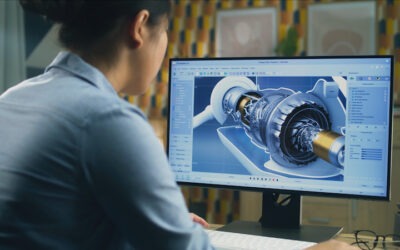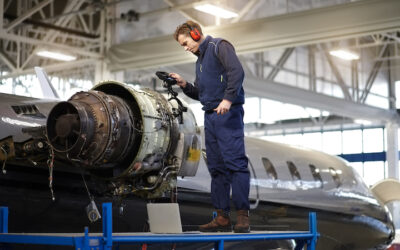Blog
Ensuring Quality Excellence
Quality control and assurance plays a pivotal role in the complex, safety critical aerospace industry. With precision and unwavering commitment to safety being top priorities, it is crucial to understand the various quality-related aspects that shape the aerospace manufacturing domain. The aircraft and original component manufacturers demand precision, adherence to stringent standards and unwavering commitment to safety.
Quality assurance in technical publications is essential to ensure that the documentation provided to users is accurate, clear, and reliable. Technical publications refer to documents such as user manuals, installation guides, maintenance manuals, and other technical documentation that accompany products or systems.
Importance of Quality Control in Aerospace Manufacturing
Due to the complex nature of aerospace operations and the potential risks involved, strict regulations and standards govern this industry. Following regulatory compliance is crucial to ensure safety, security, and adherence to established standards. Quality control ensures all standards are upheld.
Key Regulations and Quality Certifications in Aerospace Manufacturing.
Aerospace manufacturers must adhere to stringent regulations and certifications to guarantee the safety, reliability, and quality of their products. The following are some prominent regulations and certifications in the aerospace industry.
Federal Aviation Administration (FAA) Regulations:
The FAA sets forth regulations for the design, production, and operation of aircraft. Manufacturers must comply with these regulations to ensure airworthiness and safety. Quality control helps to meet these requirements by verifying the manufacturing process, materials and components meet the prescribed standards.
European Union Aviation Safety Agency (EASA) Regulations:
In Europe, the EASA regulates the aviation industry. It covers areas such as design, production, maintenance, and continuing airworthiness. Aircraft and original equipment manufacturers (OEMs) must comply with EASA’s and European Union Aviation Safety Regulations (EU-ASR’s). Quality control ensures that the manufacturing processes align with these regulations.
International Organization for Standardization (ISO):
ISO provides the general framework for quality management systems. Aircraft and OEM manufacturers adhere to ISO 9001, which outlines the requirements for quality management systems. It helps implement a robust quality control process including inspection, testing and documentation to ensure quality throughout the manufacturing process.
AS 9100 / EN 9100 / JIS Q 9100 Standard:
AS 9100 is a widely recognized quality management standard specific to the aerospace industry. It builds upon the ISO 9001 standard by incorporating additional requirements for aerospace companies. AS/EN 9100 sets quality requirements for design, development, production, installation, and servicing. EN 9100 and JIS Q 9100 are identical to AS 9100 but cater to aerospace companies in Europe and Asia respectively. These standards address areas such as product safety, risk management, configuration management, and regulatory compliance.
NADCAP (National Aerospace and Defense Contractors Accreditation Program): Nadcap establishes accreditation standards for specific processes used in the aerospace and defense sectors. Processes such as heat treating, chemical processing, and non-destructive testing must comply with Nadcap standards. Meeting these standards requires diligent quality control measures, including through process validations, equipment calibration and adherence to specific procedures.
Quality Control in Aerospace Manufacturing in India.
Quality control and assurance are paramount for the Indian aerospace manufacturing industry. The Directorate General of Civil Aviation (DGCA) oversees civil aviation activities, including aerospace manufacturing. The DGCA issues Civil Aviation Requirements (CARs) that establish standards and guidelines for aerospace design, quality control and production. Adherence to ISO 9001 and AS 9100/ EN 9100 is typically followed.
Quality Assurance through Technical Documentation for Aerospace Manufacturers.
The Quality Assurance (QA) process in technical documentation involves several key aspects to guarantee the highest quality:
1. Content Accuracy:
In the aerospace industry it is crucial to ensure that the information provided is factually correct and up to date. To achieve this, quality team experts conduct thorough reviews and validations of technical content to ensure the information presented is accurate.
2. Clarity and Consistency:
The language used in the aerospace technical documentation process must be clear and easily understandable. QA makes sure that the language used in the documents is clear, concise, and easy to understand. Consistency in terminology and writing style is also crucial to enhance user comprehension.
3. Compliance and Standards:
QA ensures that the technical documents adhere to the aerospace industry standards, regulations, and guidelines. Additionally, it reinforces compliance with specific document formats or templates which is absolute to maintain consistency throughout the documents.
4. User-Centric Approach:
QA facilitates focusing on the needs of the end-users and designing the documentation to address their requirements effectively. This involves conducting usability testing and gathering feedback to improve user experience.
5. Visual Elements:
In aerospace technical documentation, visual elements such as illustrations, diagrams, and graphics play a crucial role in conveying complex information. It is essential to check that these elements are accurate, well-labeled, and enhance user understanding.
6. Revision Control:
The aerospace industry is ever-evolving, with updates and changes being a constant aspect. QA supports this by implementing a robust revision control process to manage these updates and changes to the technical documents over time.
7. Cross-Referencing and Hyperlinks:
Technical documentation frequently involves cross-references and hyperlinks within the documents. QA ensures that these links are correctly functioning and lead to the intended content for user convenience.
Quality control and assurance form the bedrock of excellence in aerospace manufacturing. Adhering to regulations and obtaining relevant certifications ensures safety, reliability, and customer confidence. By implementing stringent quality control measures and following industry best practices, manufacturers can continue to meet the highest standards of quality in this dynamic industry.
Related Articles
Demystifying S1000D-international specification for the production of technical publications
Demystifying S1000D – international specification for the production of technical publications. Learn how this technical publications standard streamlines technical documentation for aerospace, and automotive industries.
Modernizing Technical Documentation
Learn how to transition from traditional IPD manuals to the S2000M standard with Cades Studec, modernizing technical documentation for enhanced efficiency.


